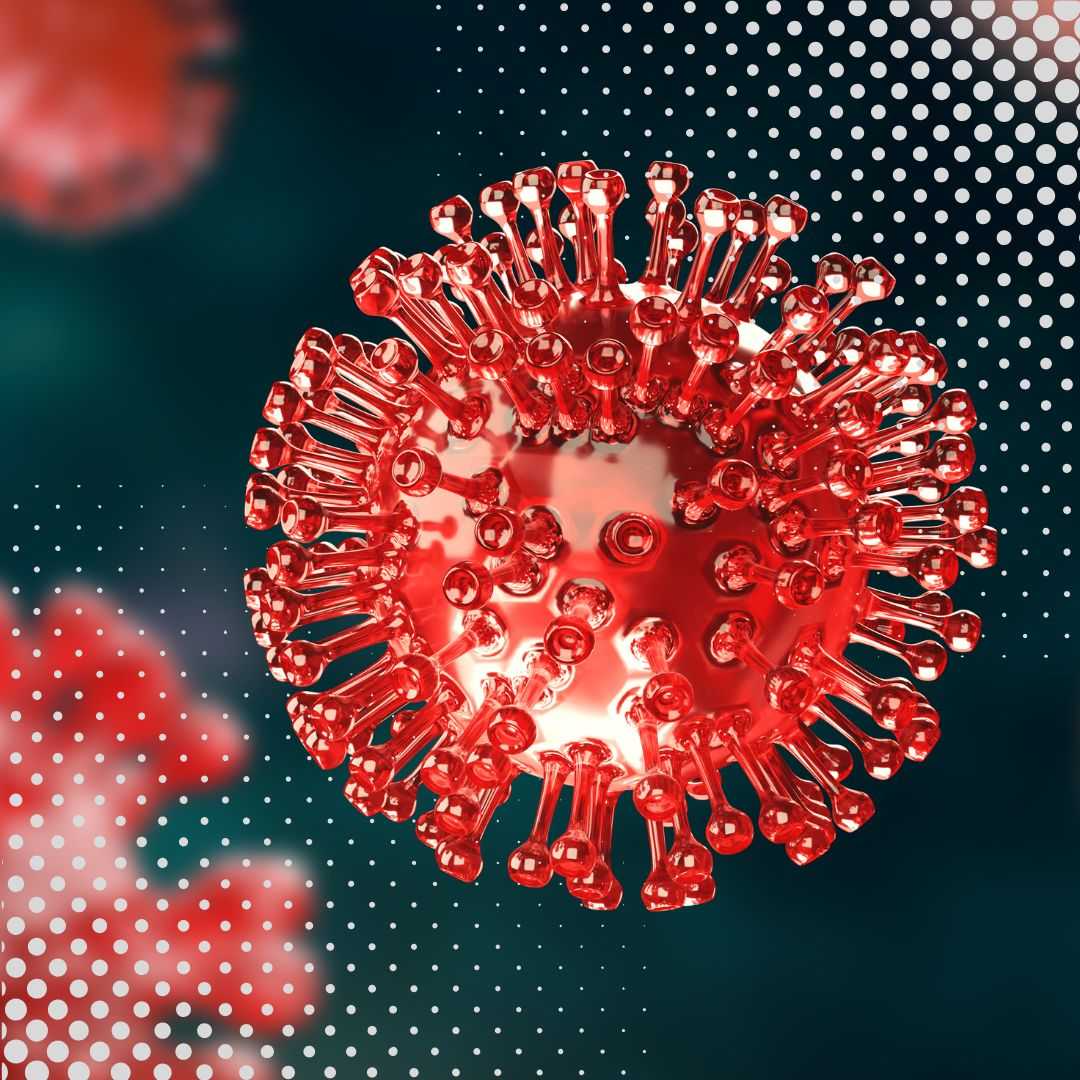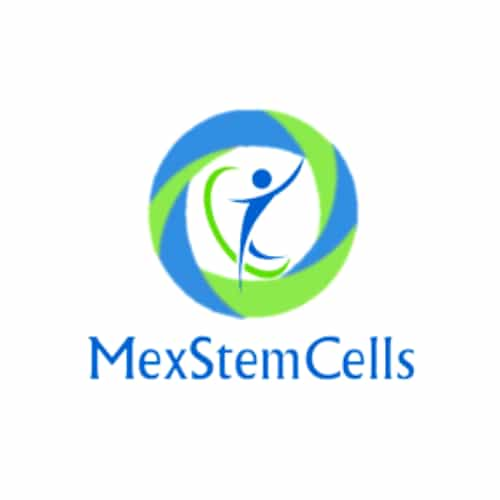Explore the cost of Stem Cell Therapy for Parkinson's Disease in Mexico

Stem cell therapy for Parkinson's Disease (PD) is an area of significant research and development within regenerative medicine, offering hope for managing symptoms and potentially slowing disease progression. Mexico, particularly clinics in popular medical tourism hubs like Tijuana, has become a destination for patients seeking these advanced, often investigational, treatments at a more accessible cost.
What is the Average Price of Stem Cell Therapy for Parkinson's Disease in Mexico?
"The average price of stem cell therapy for Parkinson's Disease in Mexico typically ranges from $8,000 to $15,000 USD per treatment session. This cost can vary significantly based on the type and quantity of stem cells used, the administration method (e.g., intravenous, intrathecal), the specific clinic's protocol, and any included complementary therapies or services."
For example, some clinics offer protocols starting around $8,000 to $10,000 USD for a specific cell count and administration method. More comprehensive packages, involving higher doses of stem cells (e.g., 100 million or more), multiple types of cells, or additional supportive treatments like exosomes, PRP, or specific IV drips, might reach up to $15,000 USD or potentially slightly higher. As of June 2025, these prices represent a substantial saving compared to the United States or Canada, where similar investigational treatments, if available, could cost upwards of $20,000 to $50,000+ per session.
What are the typical costs for a single session of stem cell therapy for Parkinson's Disease in Mexico?
"The typical costs for a single session of stem cell therapy for Parkinson's Disease in Mexico generally fall between $8,000 and $15,000 USD, with pricing influenced by the specific type and concentration of stem cells and the complexity of the treatment protocol."
The cost of stem cell therapy for Parkinson's Disease in Mexico reflects the individualized nature of these advanced treatments. Here's a general breakdown:
- Standard Protocols (e.g., IV administration with standard cell count): You might find treatments starting from $8,000 to $10,000 USD. These usually involve a defined number of Mesenchymal Stem Cells (MSCs), often derived from umbilical cord tissue, administered intravenously. This is often the starting point for patients seeking general neurological support.
- Higher-Dose or Combination Protocols: As the number of stem cells administered increases (e.g., 50 million, 100 million, or more), or if the treatment involves additional components like exosomes (extracellular vesicles with regenerative properties), Platelet-Rich Plasma (PRP), or specific neurotrophic factors, the price can increase to $10,000 to $15,000 USD. These higher doses or combinations may be recommended for more advanced stages of PD or for patients seeking more intensive treatment.
- Advanced Administration Routes: While less common, if a clinic offers more invasive administration methods (e.g., intrathecal injection into the spinal fluid, which aims for closer delivery to the central nervous system), the cost would typically be on the higher end of the spectrum due to increased complexity and specialized expertise required.
The exact cost will always be determined after a thorough medical evaluation by the clinic's specialists, who will then design a personalized treatment plan.
Why is stem cell therapy for Parkinson's Disease more affordable in Mexico?
"Stem cell therapy for Parkinson's Disease is more affordable in Mexico primarily due to lower operational costs for specialized clinics, reduced labor wages for highly skilled medical professionals, and a more favorable regulatory environment for regenerative therapies compared to the United States, allowing for significant cost savings for patients."
The substantial cost advantage of seeking stem cell therapy for Parkinson's Disease in Mexico (often saving 50% to 70% compared to equivalent treatments in the US) is a major draw. This affordability stems from economic differences, rather than a compromise on the quality of care or the stem cells themselves at reputable clinics:
- Lower Overhead Costs: The operational expenses for medical facilities in Mexico, including rent for clinics, utilities, medical supplies, and general administrative costs, are considerably lower than in the US or Canada.
- Reduced Labor Wages: While Mexican medical specialists, including neurologists, stem cell therapists, nurses, and lab technicians, are highly trained and experienced, their salaries are significantly lower than what their counterparts earn in North America. This significantly reduces the overall cost of providing the therapy.
- Regulatory Framework: As of June 2025, the regulatory landscape for stem cell therapies in Mexico, overseen by COFEPRIS (Mexico's equivalent of the FDA), allows for broader and more accessible applications of regenerative treatments than in the US. In the US, many stem cell therapies for neurological conditions like PD are still considered investigational and can only be accessed through costly clinical trials or under specific, limited exemptions. This regulatory difference reduces development and operational costs for Mexican clinics.
- Favorable Exchange Rates: The purchasing power of the US dollar against the Mexican Peso further enhances affordability for international patients.
- Competitive Market: Mexico's robust medical tourism sector, particularly in cities like Tijuana and Guadalajara, fosters competition among specialized clinics, encouraging them to offer attractive pricing for advanced therapies.
These combined factors enable reputable Mexican clinics to provide cutting-edge stem cell therapy for Parkinson's Disease at a fraction of the cost seen in many other countries.
What types of stem cells are used for Parkinson's Disease treatment in Mexico?
"For Parkinson's Disease treatment in Mexico, clinics primarily utilize Mesenchymal Stem Cells (MSCs), most commonly derived from umbilical cord tissue (Wharton's Jelly), but also from adipose (fat) tissue or bone marrow, due to their neuroprotective, anti-inflammatory, and immunomodulatory properties."
MSCs are the most prevalent type of stem cell employed in regenerative medicine for neurological conditions like Parkinson's Disease. They are multipotent cells that can differentiate into various cell types and exert therapeutic effects through several mechanisms:
- Neuroprotection: MSCs can release growth factors and other molecules that help protect existing dopamine-producing neurons from further degeneration.
- Anti-inflammation: They possess powerful anti-inflammatory properties that can reduce neuroinflammation in the brain, which is implicated in PD progression.
- Immunomodulation: MSCs can modulate the immune system, potentially calming autoimmune responses that may contribute to neuronal damage.
- Trophic Support: They secrete factors that promote tissue repair and regeneration.
Common sources for MSCs in Mexico include:
- Umbilical Cord Tissue-Derived MSCs: These are "allogeneic" (donor-derived) and are a preferred source due to their abundance of young, potent, and ethically sourced cells. They are considered immune-privileged, reducing the risk of rejection.
- Adipose-Derived Stem Cells (ADSCs): These are usually "autologous" (from the patient's own fat tissue) or, less commonly, allogeneic. They are harvested via liposuction, processed, and then re-administered.
- Bone Marrow-Derived Stem Cells (BMSCs): Also autologous, harvested from the patient's bone marrow. While effective, harvesting is more invasive and cell potency can decrease with age.
The specific type, source, and quantity of MSCs used will be determined by the clinic's protocol and the patient's individual neurological assessment.
What is typically included in the price of stem cell therapy packages for Parkinson's Disease in Mexico?
"The price of stem cell therapy packages for Parkinson's Disease in Mexico typically includes the initial medical consultation, the cost of stem cells (sourcing and processing), administration of cells (e.g., IV, intrathecal), and immediate post-treatment monitoring, with some clinics offering additional supportive therapies or logistics."
When considering stem cell therapy for Parkinson's Disease in Mexico, it's crucial to obtain a detailed, itemized quote to understand exactly what is covered in the package. Reputable clinics typically offer comprehensive services:
- Medical Consultation: This involves a thorough review of your medical history, current PD symptoms, diagnostic imaging (MRI, PET scans), and a neurological evaluation to assess your suitability and create a personalized treatment plan. This may include remote initial consultations.
- Stem Cell Sourcing and Preparation: The cost of acquiring the specific type and quantity of stem cells (e.g., from a certified umbilical cord bank) and the sophisticated laboratory processing to ensure cell viability and purity.
- Administration of Cells: The cost associated with the chosen delivery method, whether it's intravenous (IV) infusion, intrathecal injection (into the spinal fluid), or a combination of approaches.
- Post-Treatment Monitoring: Immediate observation and care after the procedure to monitor for any adverse reactions and ensure patient stability.
- Medical Team Fees: Fees for the specialized neurologists, stem cell therapists, nurses, and technicians involved in your treatment.
- Medications: Initial medications administered during the treatment process.
- Logistical Support (Varies by clinic): Some comprehensive packages may include ground transportation from the border or airport to the clinic/hotel, and even accommodation for a few nights.
What is often not included and should be budgeted separately:
- Extensive Pre-treatment Diagnostics: While some basic labs might be included, specialized neurological assessments or advanced imaging (e.g., functional MRI) might be extra if not already completed.
- Additional Therapies: Complementary treatments like exosomes, NAD+ IV drips, hyperbaric oxygen therapy (HBOT), or specific physical/occupational therapy sessions might be offered as add-ons.
- Multiple Sessions: If a series of treatments is recommended for sustained benefits, each session will typically be a separate cost.
- Travel and Accommodation: Unless explicitly stated in a premium package, flights, hotel stays, local transportation beyond clinic transfers, and meals are separate expenses.
- Long-term Follow-up: While immediate post-treatment contact is usually provided, long-term neurological monitoring by the clinic or your local neurologist is typically not included.
Always request an itemized quote to ensure full transparency and avoid any unexpected expenses.
What factors influence the total cost of stem cell therapy for Parkinson's Disease in Mexico?
"The total cost of stem cell therapy for Parkinson's Disease in Mexico is primarily influenced by the type and quantity (number of cells) of stem cells used, the administration method, the number of treatment sessions, the clinic's reputation and specialization, and any complementary therapies included in the protocol."
The personalized nature of stem cell therapy means that the final cost can vary significantly. Key factors impacting the price include:
- Stem Cell Type and Quantity: Umbilical cord-derived MSCs are generally more expensive due to their sourcing from licensed banks and processing. Higher cell counts (e.g., 100 million+ cells per dose) are typically associated with higher costs, as they involve more complex lab work and sourcing.
- Administration Method: Simple intravenous (IV) infusions are usually less expensive than intrathecal (spinal fluid) injections, which require specialized training and equipment for precise delivery to the central nervous system.
- Number of Treatment Sessions: Many protocols for chronic neurological conditions like PD recommend multiple sessions over time (e.g., annually, bi-annually, or a series over a few weeks) for potential cumulative or sustained benefits. Each additional session will increase the overall cost.
- Clinic Reputation and Medical Team: Highly renowned clinics with advanced research capabilities, state-of-the-art facilities, and leading neurologists or regenerative medicine specialists will likely charge more for their expertise and infrastructure.
- Complementary Therapies: Many clinics offer integrated treatment plans that combine stem cell therapy with other modalities like exosome therapy, NAD+ IV drips, neurorehabilitation programs, or hyperbaric oxygen therapy, which will add to the total cost.
- Pre- and Post-Treatment Diagnostics: Comprehensive neurological assessments, advanced imaging (MRI, PET scans), or long-term biomarker testing might be an additional cost if not specifically bundled.
A detailed discussion with the clinic about your specific condition and their recommended protocol is essential to get an accurate cost estimate.
How does the pricing of stem cell therapy for Parkinson's Disease in Mexico compare internationally?
"The pricing of stem cell therapy for Parkinson's Disease in Mexico is significantly lower compared to countries like the United States and parts of Europe, where similar investigational treatments, if available, can cost anywhere from $20,000 to $50,000 USD or more per session."
The cost differential makes Mexico a highly attractive option for patients worldwide:
- United States: As of June 2025, many stem cell therapies for neurological conditions like PD are considered investigational by the FDA. Access is typically limited to clinical trials (which may have costs or be covered by grants) or specific, often very expensive, unapproved clinics operating under limited exemptions. A single session, if offered outside of a trial, could be in the range of $20,000 to $50,000+ USD.
- Europe: Prices in some European countries (e.g., Germany, Switzerland) for advanced regenerative therapies can also be substantial, often ranging from €15,000 to €40,000+ per treatment.
- Other Medical Tourism Hubs: While other countries like Panama or Costa Rica also offer stem cell therapies, Mexico, particularly its border cities like Tijuana, remains extremely competitive, especially for North American patients due to its convenient proximity.
The lower pricing in Mexico allows more individuals to access these potentially life-improving stem cell treatments for Parkinson's Disease.
Is stem cell therapy for Parkinson's Disease covered by insurance in Mexico or my home country?
"No, stem cell therapy for Parkinson's Disease is generally not covered by standard health insurance in Mexico, the United States, Canada, or most other countries, as it is primarily considered an experimental or investigational therapy by major regulatory bodies."
As of June 2025, patients considering stem cell therapy for Parkinson's Disease should anticipate paying the full cost out-of-pocket. Here's why insurance typically doesn't provide coverage:
- Investigational Status: Most insurance companies adhere to the guidelines of regulatory bodies (like the FDA in the US, Health Canada) which classify these treatments as investigational. Until they receive full approval as standard medical practice for Parkinson's Disease with extensive, long-term efficacy and safety data, insurance coverage is highly unlikely.
- Lack of Definitive Clinical Trial Data: Insurers typically require robust, large-scale, placebo-controlled clinical trial data demonstrating clear long-term efficacy and safety for specific indications before they will cover a treatment. This data is still being gathered for stem cell therapy in PD.
- Off-Label Use: Even if stem cells are approved for certain orthopedic or blood conditions, their use for neurological conditions like PD is considered "off-label" and therefore not covered.
- Elective Nature: From an insurance perspective, many experimental treatments are deemed elective or non-essential, falling outside of standard coverage.
- Out-of-Network/Out-of-Country: Even if a plan had some experimental coverage, it would likely not extend to treatment obtained in a foreign country or from providers not in their network.
While Flexible Spending Accounts (FSAs) or Health Savings Accounts (HSAs) in the US might be used for these expenses, it's crucial for patients to confirm eligibility with their plan administrator directly.
How to find a reputable clinic for stem cell therapy for Parkinson's Disease in Mexico?
"To find a reputable clinic for stem cell therapy for Parkinson's Disease in Mexico, prioritize clinics with board-certified neurologists and regenerative medicine specialists, transparent pricing, verifiable cell quality and sourcing, strong patient testimonials, and clear communication regarding treatment protocols and realistic expectations."
Choosing a reputable clinic is paramount for safety and potential efficacy when dealing with a complex neurological condition like Parkinson's Disease. Here's a checklist for thorough vetting:
- Medical Team Credentials: Ensure the doctors overseeing and administering the treatment are board-certified in relevant specialties (e.g., Neurology, Internal Medicine, Regenerative Medicine) and have specific experience with stem cell applications for neurological disorders.
- Transparency in Stem Cell Sourcing and Processing: This is critically important. Ask about the source of their stem cells (e.g., accredited umbilical cord tissue banks, in-house adipose/bone marrow processing labs), how they are processed, and if they provide Certificates of Analysis (COAs) for cell count, viability, and purity for each batch.
- Clinic Licensing and Accreditations: Verify that the clinic is fully licensed by the Mexican Ministry of Health (COFEPRIS). While international accreditation (like JCI) is less common for specialized stem cell clinics, it's a strong indicator of quality if present.
- Detailed Treatment Protocols: The clinic should provide a clear, individualized treatment plan based on your specific PD stage, explaining the rationale, dosage, administration routes, expected outcomes (realistic), and potential risks.
- Realistic Expectations: Be wary of clinics that make exaggerated claims or promise "cures." Reputable clinics will emphasize the investigational nature of the treatment and manage expectations responsibly, focusing on symptom management and potential disease modification rather than a full cure.
- Patient Testimonials and Reviews: Look for consistent positive feedback on independent platforms. Inquire if they can connect you with past patients (while respecting privacy).
- Communication: Ensure staff are multilingual and provide clear, prompt, and empathetic communication.
- Facility Standards: Ask for photos or virtual tours of their lab (if they process in-house) and treatment facilities to assess cleanliness and professionalism.
- Emergency Protocols: Inquire about their emergency preparedness and access to hospital facilities if needed.
Thorough research, direct communication, and a healthy dose of skepticism are key to making a safe and informed decision about stem cell therapy for Parkinson's Disease in Mexico.
Ready to explore potential innovative therapies for Parkinson's Disease? Visit PlacidWay to discover world-class medical tourism options and connect with trusted providers offering high-quality, affordable stem cell treatment for Parkinson's Disease in Mexico.


.png)




.jpg)
.png)

.png)






Share this listing